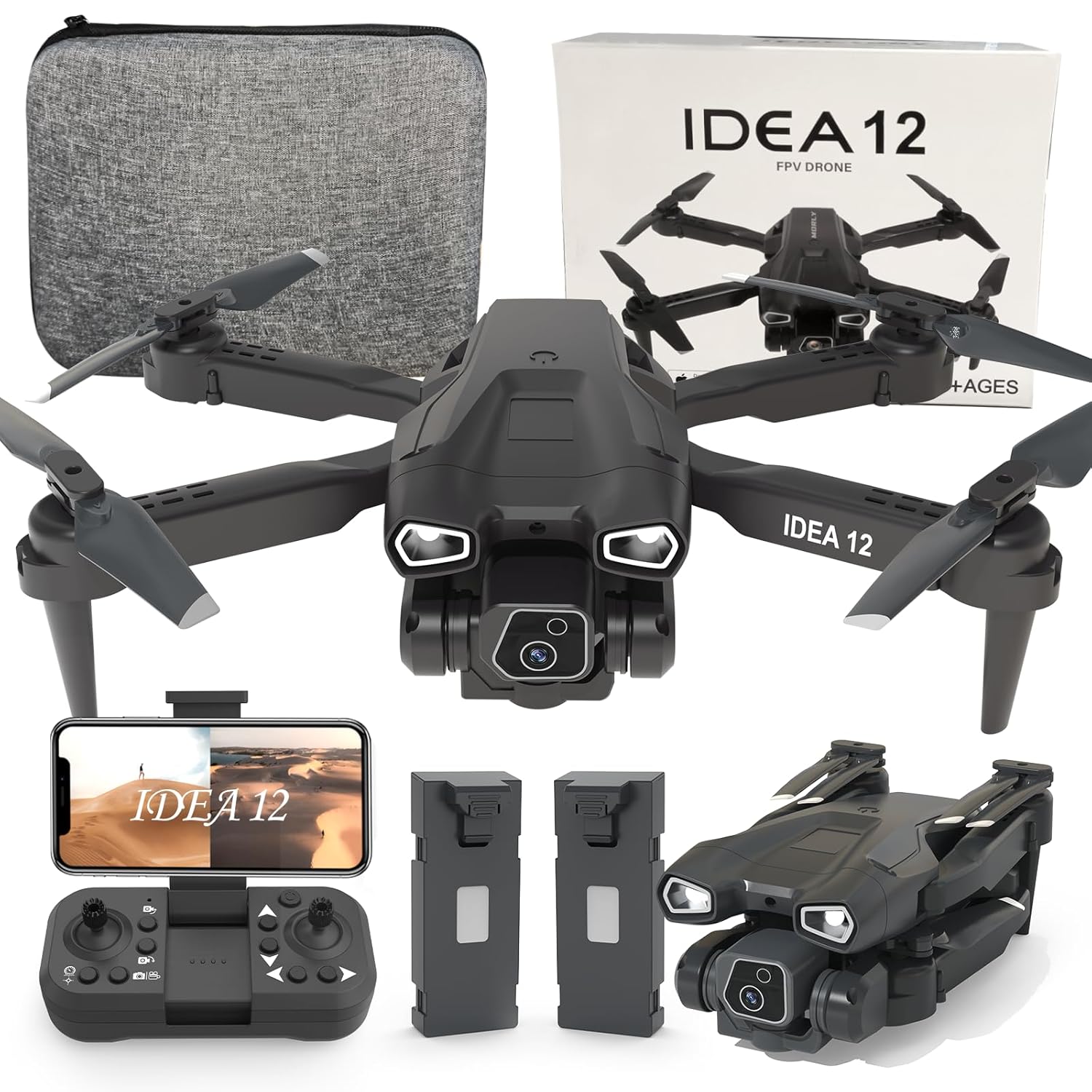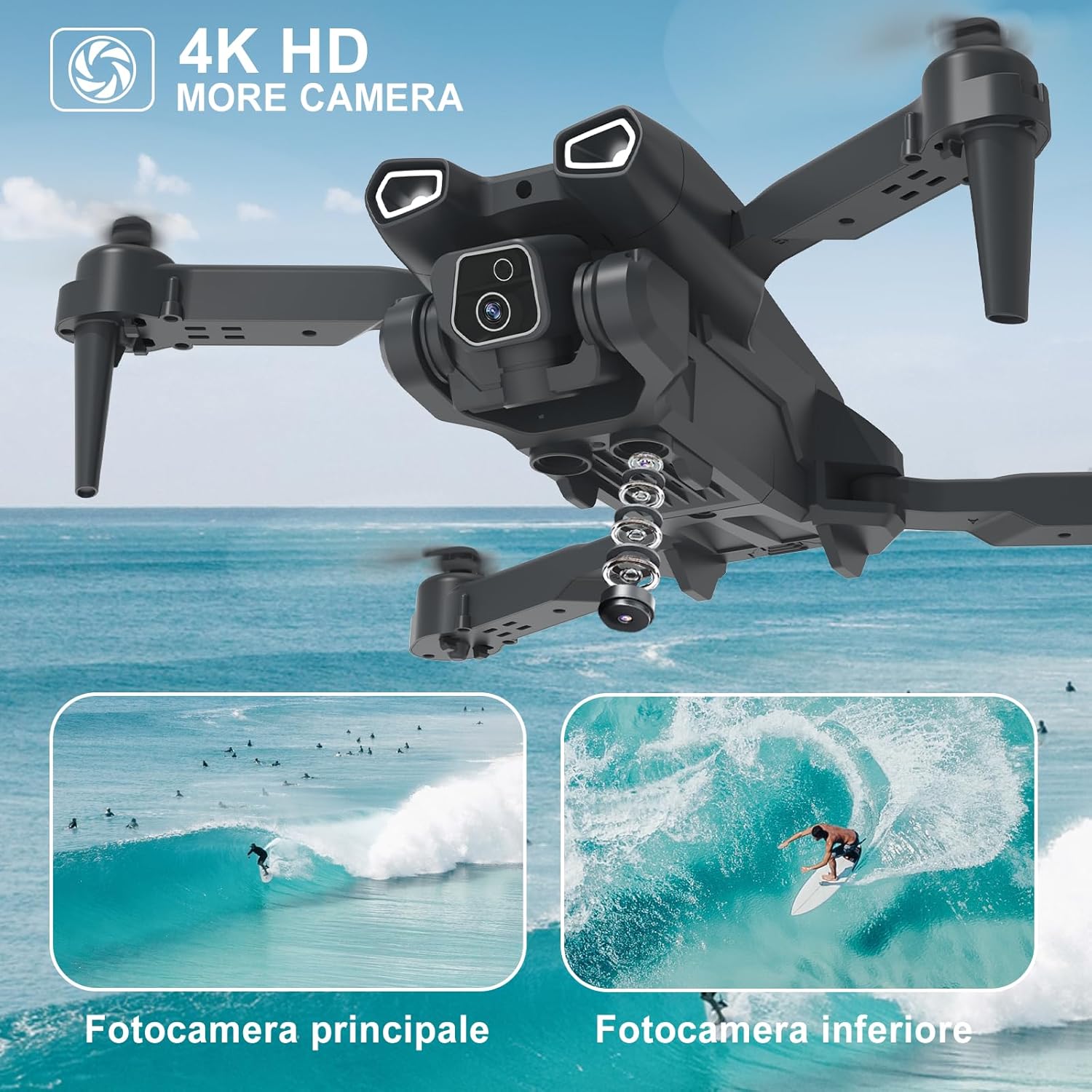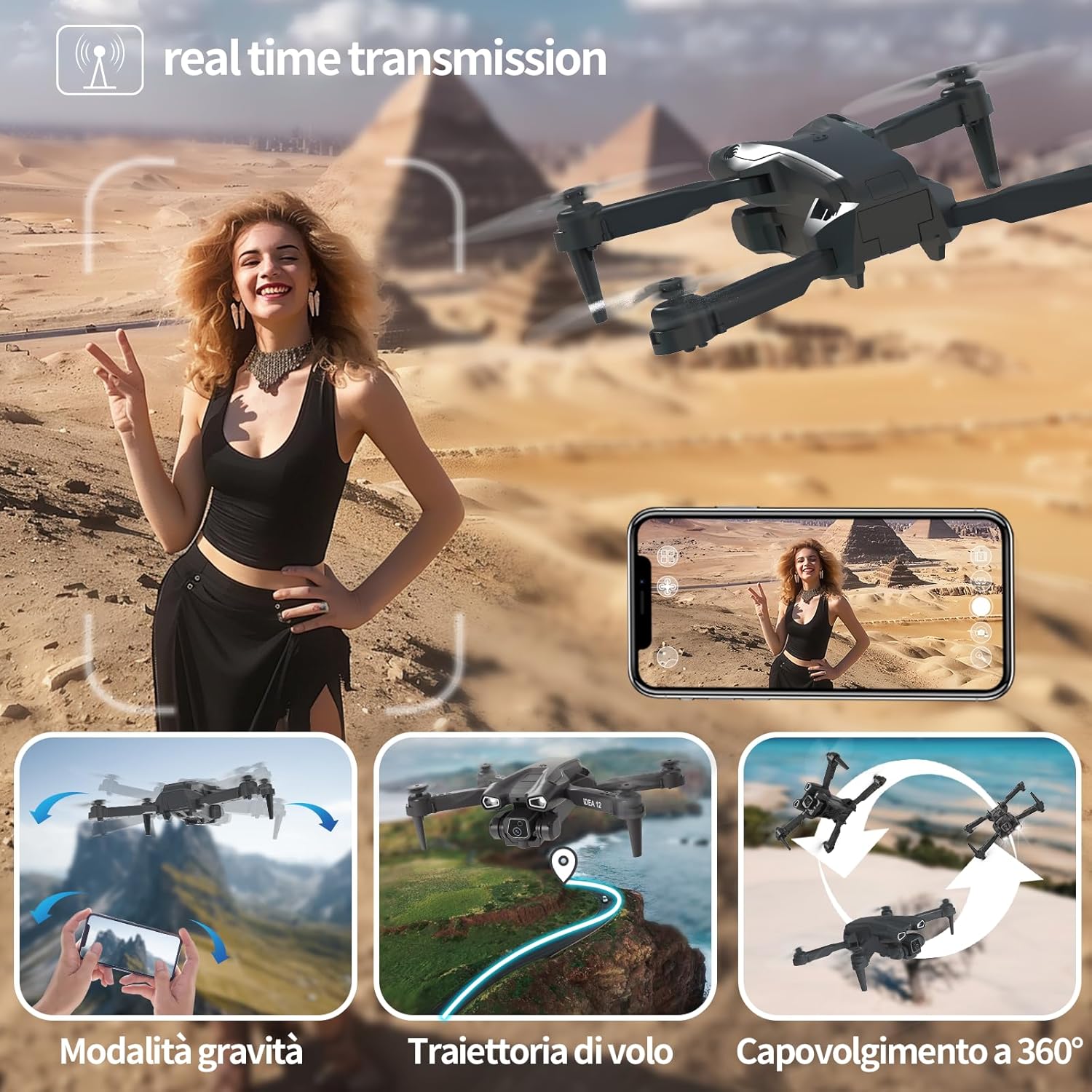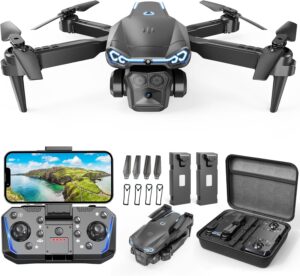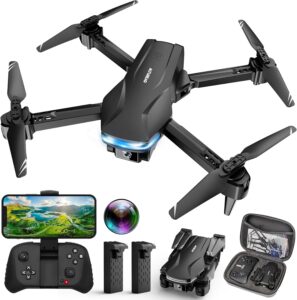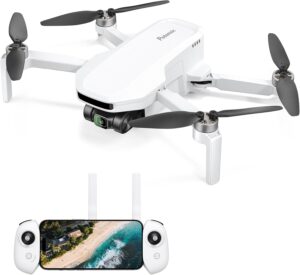Have we ever wished a Saturday afternoon could include a flying camera that doesn’t demand a pilot’s license, a trust fund, or nerves of steel?
What We’re Reviewing
We’re talking about the 12 Mini Drone with Camera for beginning Drones for adults 1080P HD RC Quadcopters with Optical Flow Positioning rc helicopter drone for Beginners, Drone for beginning daul Camera 2 Batteries. That’s a mouthful even before the propellers start spinning. For sanity’s sake, we’ll call it the TTROARDS 12 mini drone. It’s a lightweight, foldable quadcopter with a 1080P HD camera, optical flow positioning for steady hovering, app-based controls for route drawing and gesture selfies, and it ships with two rechargeable batteries as well as beginner-friendly features like one-key takeoff and landing.
If we’ve avoided drones in the past because they seemed intimidating, expensive, or destined to end up lodged in a maple tree, this one is designed to counter all three concerns.
12 Mini Drone with Camera for beginning Drones for adults 1080P HD RC Quadcopters with Optical Flow Positioning rc helicopter drone for Beginners,Drone for beginning daul Camera 2 Batteries
First Impressions: Unboxing Without Tears
We love a box that doesn’t make us feel like it’s scolding us. The TTROARDS 12 arrives neatly organized, as if it’s worried we’ll misplace it before we even begin. Each component has its spot, the manual is readable (a modern miracle), and nothing rattles around like loose change in a winter jacket.
From the moment we open it, the message is clear: this drone is meant to fly, not to be a retirement project. Accessories are straightforward, there’s redundancy for fragile parts, and the batteries snap in with reassuring clicks that say, “You’ve got this” in the voice of a supportive camp counselor.
What’s in the Box
- TTROARDS 12 mini drone (foldable)
- 1080P camera pre-installed with adjustable angle
- Two rechargeable batteries
- Propeller guards
- Spare propeller blades
- USB charging cable
- Screwdriver and small fasteners
- Quick-start guide and manual
It’s essentially a starter kit in a box. We won’t need a hardware store expedition or a degree in aeronautics. Also, we appreciate the inclusion of propeller guards. They’re like training wheels for blades, and we’re not above training wheels.
Design and Build Quality: Cozy, Foldable, and Under 250g
Fold it up and the drone becomes a neat little rectangle that looks like it has somewhere to be—probably a backpack. It’s lightweight, coming in under 250 grams, which in many places means fewer registration requirements, but of course we should check local rules. We just know our shoulders are relieved at the idea of less weight to carry around when we’re on a walk, a hike, or a family trip.
The matte plastic body feels solid enough to survive minor misjudgments—though let’s not ask it to tango with pine branches. The arms fold out with a gentle snap into place. The camera is mounted at the front and the angle is adjustable, giving us control over whether we want a sweeping landscape or the more humbling view of our shoes. The weight class also means it won’t fight the wind like a heavyweight champ, but indoors or in mild outdoor conditions, it’s content and controllable.
Optical flow positioning is the secret sauce here. A downward-facing sensor monitors the ground texture, helping the drone hold its position more steadily, especially at low altitude and indoors. In plain English: it wobbles less, and our hearts wobble less along with it.
Setup: From Couch to Sky in Minutes
We power it on, connect through the app, and follow a calibration routine that doesn’t ask much other than a few gentle spins in the air—ours, not the drone’s. There’s one-key takeoff and landing, which we used repeatedly just for the joy of pressing a button and watching it comply. It’s like the elevator button of the sky, except it actually does something.
Pairing is straightforward: we turn on the drone, connect the phone to its Wi-Fi signal, and launch the app. Live video appears on the screen, and suddenly our backyard looks like a location scout’s dream. The app even lets us draw a route with our finger, and the drone attempts to follow that path like a well-trained pet with a fondness for rectangles.
The first flight goes better than our expectations, which is a delightful reversal of how first flights usually go. One-key takeoff, hover, gentle adjustments, and then landing again as if we meant to do all of that without breaking a sweat. The optical flow positioning keeps it centered like it’s trying to remember what manners look like.
The App Experience: Routes, Gestures, and Live Video
The companion app is where we set flight routes, adjust camera tilt (when permissible), and view live 1080P video with Wi-Fi transmission. We can capture photos and videos and see them populate in our gallery like we’ve hired a very small aerial cinematographer who never complains about craft services.
Gesture selfies are surprisingly fun. Hold up a palm or make the V-sign and the drone snaps a photo, which is either a marvel of technology or the beginning of a very polite robot uprising. Either way, getting group shots no longer requires acrobatics with a timer or a precarious phone balanced on a stack of books.
Latency is present with Wi-Fi video, as expected, but for framing shots and casual cruising, it’s absolutely workable. The app layout is clean: a map-free interface that focuses on real-time video, basic flight controls, and easy access to settings. It’s not pro-level software, but it doesn’t pretend to be—and honestly, our thumbs thank it.
Flight Performance: Calm, Predictable, and Beginner-Ready
Flying the TTROARDS 12 feels like it’s designed by someone who remembers the terror of a first hover. It’s steady at low altitudes, responsive to small joystick tweaks, and forgiving when we overcorrect. The drone doesn’t snap or lurch; it glides in small, understandable steps. For a beginner quadcopter without heavy GPS gear, that steadiness matters.
Indoors, it’s in its element. Optical flow positioning makes it hover patiently, as if waiting for instructions from a small mission control. Outdoors, it’s best in light breezes—think leaves gently moving, not branches bowing in supplication. When a gust arrives, we can compensate, but we’ll get the best experience in calm weather or protected spaces.
There are usually multiple speed modes, and while this model caters to beginners, it still has enough zip to keep us engaged once we get confident. Learning to feather the controls has the pleasant feel of developing a new skill without the embarrassment of public failure. The drone’s responsiveness suggests a teacher that’s encouraging but strict enough to keep us out of trouble.
Controls We Actually Use Often
- One-key takeoff and landing: The feature we keep pressing, even when we don’t need it, because it feels like magic.
- Altitude hold and position stability (via optical flow): Hovering in place is remarkably calming, like a tiny aerial meditation session.
- App route drawing: A playful way to pre-plan simple circuits—great for practicing predictable movements or capturing a sweeping pan.
- Gesture selfies: We’re not too cool to enjoy this. There’s a joyful sense of showmanship.
We also appreciate the low battery alerts, which are the drone’s way of gently tapping us on the shoulder and asking to come home. Overvoltage protection helps safety during charging, adding a layer of reassurance for anxious chargers among us.
Camera and Imaging: 1080P With Real-Time Video
The 1080P HD camera is solid for a drone in this category. It captures clear, pleasing images in good light, with decent color and enough detail to make our neighborhood look more cinematic than it feels on a Tuesday morning. In less than ideal light, noise creeps in—as is true of almost every small sensor. But when skies are cooperative, it does a commendable job.
We can adjust the camera angle, which is invaluable. Whether we’re aiming for a landscape horizon or more targeted shots of a garden, the ability to tilt means we’re not stuck with a constant angle. The Wi-Fi feed lets us frame shots in real time. Composition becomes a game: a little higher, a little left, okay—snap.
We do want to be clear about marketing language. The camera is 1080P HD, and that’s the resolution we get. The phrase “4k Professional Support” in the package details refers to the quality and availability of support services rather than image resolution. We’d rather over-clarify now than manage disappointed expectations later.
When the Camera Shines
- Late afternoon light with long shadows and calm wind can make the footage look dreamy.
- Over open spaces—parks, fields, beaches—the camera captures a sense of scale we can’t get from the ground.
- Slow, deliberate movements yield smoother video. Gentle yaw turns and low passes are our cinematic friends.
When It Needs Help
- Strong winds will show up in our footage as jitters and drifting. It’s physics, not personal.
- Low light brings noise. We hug daylight hours for best results.
- Fast turns make video choppy. We’re learning to treat the yaw stick like a sleeping cat: move slowly and quietly.
Portability: The Backpack Test
The TTROARDS 12 folds down with satisfying simplicity. It slips into a daypack without demanding the main compartment. Pair that with the under-250g weight and we have a travel-friendly setup that doesn’t inspire resentment before we even leave the house.
We love that it doesn’t feel precious. We’re careful, of course, but there’s a difference between a tool we can toss into a bag and one that needs its own velvet throne and a chorus of backup singers to announce its presence.
Travel Notes We’ve Learned the Not-So-Hard Way
- Batteries go in carry-on luggage if we’re flying commercially. Lithium cells and checked bags are not friends.
- Keep propeller guards handy if we plan indoor flights at a rental or a friend’s place. They help save walls, egos, and friendships.
- Know local regulations. Being courteous and legal is the new cool.
Battery Life and Charging: Long Enough to Learn, Short Enough to Want More
The package includes two rechargeable batteries. Expect up to around 20 minutes of total flight time between them, depending on conditions and how aggressively we fly. If we’re hovering and gently moving indoors, we’ll get more; if we’re outside, zipping around in sporty bursts, we’ll get less.
Each battery slides into the drone securely, and swapping them out is straightforward. The low battery alert is our cue to bring the drone in gently rather than reenacting a dramatic emergency landing. Charging is via USB, which is convenient for hotel rooms, cars, or kitchen counters where technology congregates.
Overvoltage protection during charging is a reassuring mention in the specs. We still stick to sane charging practices—never leave batteries charging unattended and avoid questionable third-party chargers like the plague.
Charging Best Practices We Actually Follow
- Let batteries cool to room temperature before charging.
- Use the supplied cable and a reputable USB power source.
- Store batteries about half charged if they’ll sit for more than a week.
- Wipe terminals gently if we see dust or grime—electrons appreciate tidy hallways.
Safety and Reliability: Prop Guards, Alerts, and Spare Blades
If there’s a theme with this drone, it’s that someone thought about the things that usually make us anxious and then tried to provide a fix. Propeller guards help protect against bumps and nicks, especially indoors. Spare props are there for the hubris of “just one more turn.” The low battery alert is a polite but firm reminder, like a librarian who’s fond of us but will not hesitate to close the door at 5 pm.
The build tolerates reasonable beginner knocks. The arms are sturdy enough for careful use, and the folding mechanism doesn’t feel fragile. This is not a rugged, waterproof action cam quad, but it isn’t a delicate art piece either. It’s a friendly middle that encourages us to fly instead of fuss.
Learning Curve: From Wobble to Confidence
In our first 10 minutes, we learned that hovering smoothly is both easier than we feared and harder than YouTube makes it look. The drone’s stability helps us feel competent faster, and small victories add up: a stable hover, a gentle lateral slide, a clean 90-degree yaw, a tidy landing on the kitchen mat that no one signed up to be a helipad.
If we’re new to drones, we’ll probably spend the first battery indoors getting to know the basics. By the second battery, we’ll venture outside on a calm day and try wider arcs, slow pans, and some camera work. It’s a satisfying progression—like practicing scales and then playing a song that sounds oddly like music.
Adults, Kids, and Everyone Who Wants a Flying Camera
This drone is marketed for adults and beginners, and we agree with that focus. Adults will enjoy its ease and portability. Older children can learn with supervision, but we stick to the manufacturer’s age recommendations and, frankly, common sense. The propeller guards help, but they’re not a magic shield against poor decisions.
Support and Extras: The Comfort of a Safety Net
We appreciate that the package includes things we would otherwise be shopping for in a panic. Spare blades and prop guards are not optional after a certain number of flights; they are inevitable needs. Having them from day one keeps the tone relaxed rather than frantic.
The product also calls out 24-hour technical support and a general dedication to customer satisfaction. We like knowing a human on the other side of a message can answer a question about pairing, calibration, or why the drone keeps drifting left like a distracted cyclist. As for warranty specifics, we consult the included documentation or retailer details, since these can change by region and seller.
Use Cases That Made Us Smile
- Backyard camera practice: Our yard is suddenly interesting when seen from above. The lawn looks neater, the garden fancier, and the patio less mysterious.
- Vacation footage without a burden: Instead of lugging a bigger drone and stressing, we tuck this into a day bag. The footage might not be cinematic, but it’s joyful, and that counts.
- Group selfies with less chaos: Gesture control has turned us into the group’s designated aerial photographer, which is an honor only until someone asks for retakes.
- A quiet afternoon hobby: There’s something meditative about holding a steady hover and making slow arcs. We do not become drone poets, but the thought crosses our mind.
Comparison: How It Fits in the Drone Landscape
Against budget toy drones with no camera, the TTROARDS 12 wins by a mile. The 1080P camera, app controls, and optical flow stability make a huge difference in both enjoyment and utility. The difference is like tossing a paper airplane versus piloting a very small spacecraft that listens when spoken to.
Against pricier GPS drones with 4K cameras and gimbals, it’s not trying to compete. Those models can handle stronger wind, return home on GPS command, and produce footage good enough for editing software and mood lighting. The TTROARDS 12 is a fun, approachable flyer with better-than-expected image quality for its class. It’s a gateway drone that doesn’t pretend to be a studio.
Limitations to Keep in Mind
- Wind sensitivity: It’s light and proud of it. Save breezy days for reading inside by a window.
- 1080P only: Solid, but not cinematic—especially without a gimbal. Smooth piloting matters for smooth footage.
- Wi-Fi range/latency: Good for framing and casual flying, but not a long-distance racer. We keep it in sight, as we should.
- No GPS features: Position-hold is via optical flow, not satellites. For most beginners, that’s enough. For autonomous return-to-home or advanced mapping, we’d need a different class of drone.
These aren’t dealbreakers; they’re simply the terms of the friendship. Once we accept them, the drone becomes more fun, not less.
Tips That Helped Us Fly Better
- Practice low and slow. Hover at eye level and shift laterally. Then try slow yaw turns. It’s the aerial equivalent of learning to ice skate by standing up first.
- Use prop guards indoors. They turn “oops” into “that’s fine.”
- Keep the camera angle set before flight when possible. It reduces airborne fidgeting.
- Fly during golden hours for nicer footage. Good light is 70% of good video.
- Draw simple app routes first. Boxes, figure-eights, and arcs help build muscle memory and confidence.
Troubleshooting Quick Guide
- Drift on takeoff: Recalibrate on a flat, well-lit surface. Optical flow needs texture beneath it—avoid glossy floors that look like an infinity pool.
- Blurry footage: Check lens for smudges. Fingerprints are documentary killers.
- Choppy video: Slow down our yaw and lateral movements. Use gradual inputs and let the drone settle before changing direction.
- Shorter flight time than expected: Wind, aggressive flying, and continuous recording drain battery faster. Fly calmer or split sessions across both batteries.
- App not connecting: Confirm Wi-Fi is connected to the drone’s network, not our home network. Restart the app and, if needed, the phone’s Wi-Fi.
Specs and Features at a Glance
Here’s a quick reference that saves us from reading the manual in public like we’re studying for a pop quiz.
| Feature | Details |
|---|---|
| Model | TTROARDS 12 Mini Drone |
| Camera | 1080P HD, adjustable angle |
| Transmission | Wi-Fi real-time video to smartphone |
| Positioning | Optical flow (downward sensor) |
| Flight Controls | One-key takeoff/landing, altitude hold, app route drawing, gesture selfies |
| Batteries | Two rechargeable batteries included |
| Flight Time | Up to about 20 minutes total (usage and conditions vary) |
| Weight | Under 250g (lightweight, travel-friendly) |
| Portability | Foldable design |
| Safety | Overvoltage protection, low battery alert, propeller guards |
| Extras | Spare blades, screwdriver, manual |
| Support | 24-hour technical support and customer satisfaction services |
We like that the headline features show up in real use, not just in marketing. The optical flow works. The one-key functions work. The app does what it says, and the camera delivers 1080P clips that look great in daylight.
Who This Drone Suits Best
- First-time flyers who want real features without an uphill struggle.
- Adults who want a casual hobby and fun footage, not a second job editing video.
- Travelers who prefer to carry less and still come home with bright, aerial snapshots of places they loved.
- Gift givers who want something that’s instantly enjoyable and doesn’t require an apprenticeship.
If we’re already flying $1,000 rigs with gimbals and ND filters, this will feel like a toy—an enjoyable one, but a toy nonetheless. If we’ve never flown and we want something approachable and well-equipped, it’s a sweet spot. It’s like learning piano on a decent keyboard before renting the concert hall.
Value for Money: Getting What We Need, Not Paying for What We Don’t
We always ask, “What are we really buying here?” With the TTROARDS 12, we’re buying easy flight, camera fun, and confidence-building stability. The two batteries mean we get more practice per session. The prop guards and spare blades reduce the cost of mistakes, which is a poetic way of saying we will bump things and it will be fine.
The app features make it feel modern rather than stripped down. Gesture selfies, route drawing, and live video go beyond bare-bones. It’s generous without being complicated. If price were a personality trait, this drone would be “considerate.”
Our Flight Routine: What a Good Day Looks Like
A great session for us starts with a battery charged, a quick calibration, and a plan measured in confidence, not altitude. Indoors, we make slow squares, then smooth circles, practicing consistent movement. Outdoors, we start low, push to a comfortable height, and then do cinematic laps of a scene—perhaps a small field, a garden, or a tree that we suddenly appreciate as art.
We keep the camera angle slightly down for more context and less sky. We move slowly to keep our footage calm and watch the battery indicator like it’s a timer on a pie in the oven. If we’re filming something important, we stop recording with time to spare. There’s nothing more tragic than a landing that begins mid-sunset.
Common Scenarios and How It Performs
- Apartment living room: Excellent. Precise hovering, low-speed control, and lots of incidental laughter.
- Backyard party: Strong. Gesture selfies and short flyovers impress without worrying the neighbors.
- Beach at dawn: Lovely—if the wind cooperates. Sand is nobody’s friend, so we launch from a towel or a small board.
- City park: Respect the rules, keep the distance, and fly low and controlled. The drone remains friendly and non-threatening, which is exactly the energy we want.
Beyond the Basics: Growing Skills With a Beginner Drone
The nicest surprise is that the TTROARDS 12 doesn’t just entertain; it teaches. We find ourselves caring about lines, speed, and composition. We learn to hold steady, to anticipate how the drone will move when we release a stick, to craft footage with intention. And when we outgrow it or decide to step up to a pro model, the skills translate.
We never thought a foldable plastic square would convince us to care about parallax, but here we are, strolling around trees for that layered movement like we’re planning a nature documentary where the star is the oak near the mailbox.
Maintenance: The Tender Loving Care Section
- Gently wipe the lens before each flight.
- Keep the motors clear of hair and threads, which are drawn to spinners like moths to lamps.
- Regularly check propeller screws and guards for tightness after a few bumps.
- Store everything in a small case or pouch if we can. Tidiness reduces drama.
We don’t need to fawn over it, but we do give it basic respect. It’s a mutual trust—do the care, get the flights.
A Few Questions We Had (and Answered)
- Can we fly it in wind? Light breezes, yes. Noticeable gusts, not recommended. We measure wind by whether leaves or our hair is being dramatic.
- Can we use it to film our friend’s backyard wedding? If we ask first, pick calm weather, and accept that it’s 1080P without a gimbal. For cheerful clips, yes. For polished wedding videos, we’d rent or hire a pro.
- Is it loud? Like most small drones, it buzzes, but it’s not obnoxious. It’s a polite hum that says, “Don’t mind us, just defying gravity a little.”
The Joy Factor
We can quantify flight time and horizontal speed, but we can’t quantify the grin we get when it lifts off smoothly at the touch of a button. There’s a magic to seeing the ground from twenty feet up, composed on a phone screen, and knowing we orchestrated that. We set a route with our finger and watch it trace a careful path. We do a tiny turn and our street looks new.
It’s a modest marvel. It won’t win film festivals, but it will win a Saturday. It faces a hallway without trembling. It takes a backyard and turns it into a set. It’s skill-building in the guise of play.
A Note on Etiquette and Respect
We never fly over people. We respect privacy. We follow local laws and posted signs, and we keep the drone in sight. The drone is a toy until someone feels watched, and then it’s a problem. We keep it friendly. We want to be the neighbor who brings muffins, not complaints.
Why We Kept Reaching for It
- Setup never felt like chores.
- The one-key functions gave us confidence.
- The combo of optical flow and light weight made indoor practice irresistible.
- The camera is good enough to save footage, not just test it.
- Two batteries meant “again?” instead of “maybe tomorrow.”
We flew it for the same reason we bring out board games or sketchbooks: it’s delightful and it requires just enough attention to pull us into the moment.
Final Verdict: A Beginner’s Drone That Actually Begins Something
The TTROARDS 12 mini drone is user-friendly in ways that matter—steady, simple to control, and quick to go from box to air. The 1080P camera and Wi-Fi feed are genuinely useful, not just bullet points. The app features, like gesture selfies and route drawing, add fun without adding frustration. Two batteries and included prop guards make it generous out of the gate.
It has natural limits: it’s not built for wind, it’s not 4K, and it’s not a GPS workhorse. But within its lane, it shines. It’s the kind of drone that makes us want to fly again the next day, and that’s the highest compliment for any hobby tool. It’s a well-considered gateway to aerial photography and an easy win for anyone who wants flight without fuss.
If what we want is a compact, foldable drone that’s kind to beginners, produces satisfying 1080P footage, and slots into our life without demanding a new personality, the TTROARDS 12 is an excellent choice. We’ll still clip a prop guard now and then, because we’re human. But we’ll land gently, swap a battery, and go again—smarter, calmer, and maybe a little more in love with our street from twenty feet up.
Disclosure: As an Amazon Associate, I earn from qualifying purchases.
